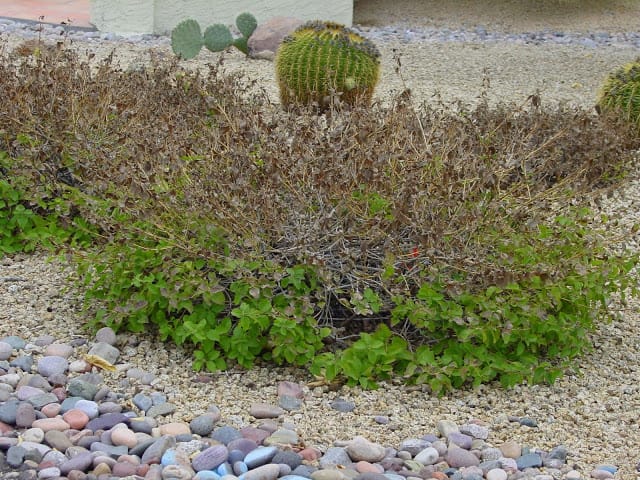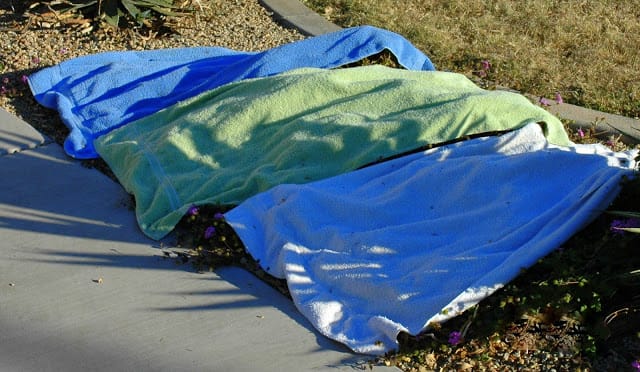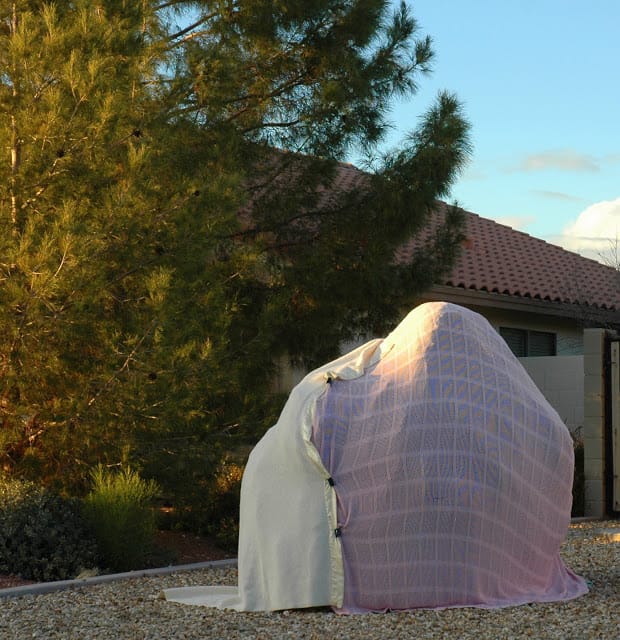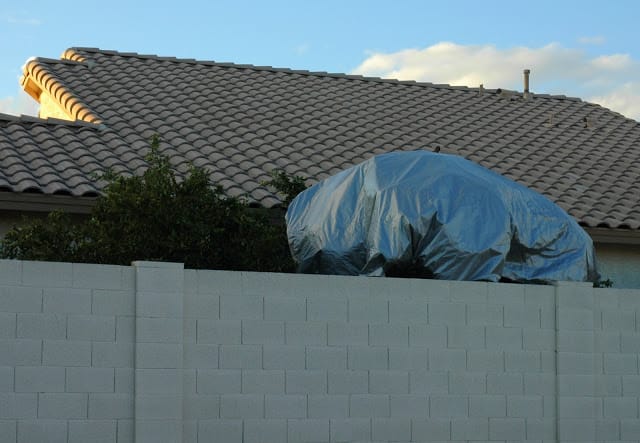The cold weather has arrived in my neck of the woods with even colder temperatures on their way later this week.
When temperatures dip below 32 degrees, you will find me wearing warm socks, slippers, a sweater, and cardigan when I’m indoors. But, besides me – frost-tender plants are also affected by the cold temperatures.
Have you ever wondered why your plant’s leaves turn brown and crispy after a freeze? Well, ice crystals form on the top of the leaves, which ‘sucks’ out the moisture from the leaf, leaving it brown and crispy.

Many plants handle cold weather just fine and have no problems with frost. However, if you have frost-tender plants, such as bougainvillea, lantana, or yellow bells, you face a choice; Do you leave them unprotected from freezing temperatures and live with the unattractive frost-damaged growth? Or do you protect them when temperatures dip below freezing?
Either choice is fine and is a matter of personal preference. Frost-damaged growth can be pruned back once the last frost of the season has passed (early March where I live). But, if you don’t want to live with brown, crispy plants for a few months, then protecting your plants when temps dip below freezing is necessary.
In the daytime, the sun shines on soil, warming it. At night, the soil releases the warmth from the ground. When you cover your plants – the heat is captured keeping your plants warmer.

Plants aren’t fussy about what type of covering you use (with one exception); old sheets and towels are usually on hand and are easy to use. Burlap and newspaper are also useful as coverings. Cover your frost-tender plants in the evening, making sure that there aren’t any gaps where the heat can escape. You can use large rocks or clothespins to secure them in place. In the day, remove the covers once temperatures have risen above freezing, and allow the sun to warm the soil again.

Don’t keep the coverings on your plants for more than two days in a row without removing them in the day since this can cause water to become trapped underneath, leading to fungal diseases and can cause plants to produce new growth that can be easily damaged by cold.
The best type of frost protection is frost cloth, which is a breathable fabric because it can ‘breathe,’ you can leave the frost cloth on your plants for a longer period. But, use it only when there is a threat of frost. After three days, uncover your plants during the day to allow the sun to reach your plants.

My neighbor made things worse by using plastic as a covering for his citrus trees.
One type of covering that you shouldn’t use is plastic, which transfers the cold to your plants and damages leaves when it touches the plant itself.
In my garden, I only protect my frost-tender trailing lantana which is in a high-profile area next to my entry. The rest of my frost-tender plants, I leave alone until it is time to prune back their frost-damaged growth in spring.
So whether you cover your plants or not, the choice is yours 🙂
For more information on frost protection, check out the following link from the University of Arizona: Frost Protection
How to Protect Plants From Frost








